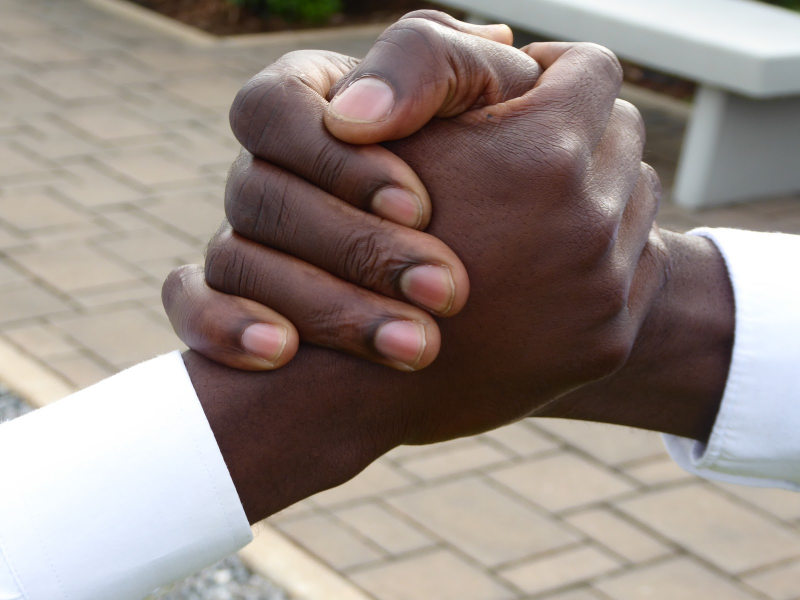Greeting etiquette
Central Africans typically raise both hands, palms out, and greet a large group of strangers vocally. Greeting etiquette is one of the lists of Central African Republic culture, customs, and etiquette. Even when greeting strangers in restaurants and pubs, everyone's hands are shaken if the group is smaller. A handshake is customary when addressing someone in an official position. It is traditional for the greeter to nod his head lower than the eldest official's if the person being greeted is older or a government official. The middle fingers may be snapped during a handshake with a friend.
Three cheek kisses are given as a greeting to friends of both sexes: one on one side, followed by two on the other. They might also receive a handshake and a finger snap as a kind of greeting. Inquiring about the person's health, family, and professions is also typical. It's crucial to keep in mind that improper greetings can cause hostility.
It is customary to include titles in formal greetings. The standard salutation is "Bara ala" for multiple people and "Bara mo" for a single person, followed by "Tonga na nyeh?" What's going on with you? Additionally, "Ala yeke da?" or "Mo yeke da?" (Are you feeling well?) There are many permutations of this. The common Muslim greeting is "Salaam alay koom. Kekef?" The common French greeting is "Bonjour." A person may take a fast breath, nod, or make a clicking sound with his throat to indicate agreement. Some individuals hiss loudly to beckon. Additionally, people call by opening and closing their palm-down hands. It's rude to point with one finger.







